May 30, 2025 | 11:53 GMT +7
May 30, 2025 | 11:53 GMT +7
Hotline: 0913.378.918
May 30, 2025 | 11:53 GMT +7
Hotline: 0913.378.918
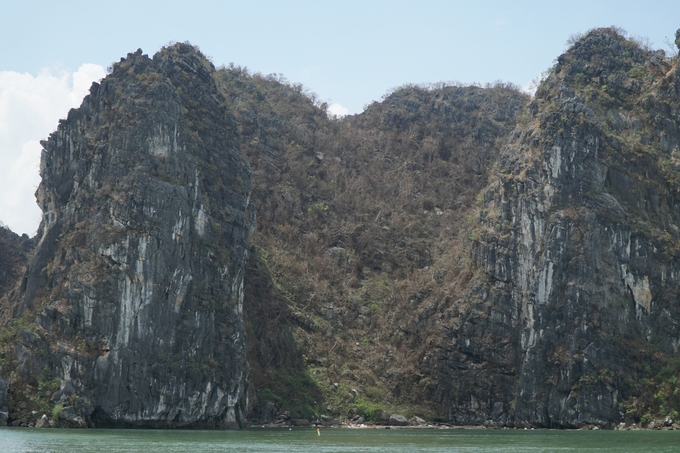
The lush green scenery on the limestone mountains in Ha Long Bay is part of the heritage, embellishing the natural landscape in the middle of Ha Long Bay. Three weeks after Typhoon Yagi, much of the vegetation on the rocky mountains has turned brown.
According to the Ha Long Bay Management Board, scientists have counted about 3,000 species of animals and plants living in the unique ecosystems of the limestone archipelago here. However, the force 13 wind swept through Quang Ninh for many hours on September 7, and the prolonged rain after the storm destroyed a significant part of this flora.

In front of Thien Cung cave on September 30, many carpets of trees were withered and withered, in contrast to the lush green trees before the storm. 100% of the trees on the rocky mountains in Thien Cung - Dau Go cave or Hang So - Ba Hang were affected, of which 70% could recover and 30% could not due to uprooting or broken.
At Vung Vieng point, about 70-80% of the trees lost their leaves and were broken. In areas such as Sung Sot cave, Ti Top, Hang Co, Me Cung, Soi Sim, many trees had broken tops and branches, some were uprooted, but they were highly likely to recover. In Tien Ong - Cua Van area, the trees were almost unaffected.

A patch of forest on a limestone mountain near the Thien Cung cave area withered due to uprooting after being hit by the hurricane-level force of Typhoon Yagi.
Scientists from the Institute of Ecology and Biological Resources believe that reducing vegetation cover on limestone mountains will negatively affect some endemic and valuable plant species in the natural population of Ha Long Bay, negatively affecting the habitat of wild animals.
In addition, the vegetation on the islands, with many dry leaves and tree trunks, is currently at high risk of forest fires as the dry season is approaching.

The phenomenon of dead trees, fallen trees, broken branches and leaf loss varies in severity, depending on the location affected by the wind.
The Ha Long Bay Management Board has invited experts from the Institute of Ecology and Biological Resources (Vietnam Academy of Science and Technology) to survey and assess the current situation after the storm and advise on solutions to preserve and sustainably promote the values of the bay.
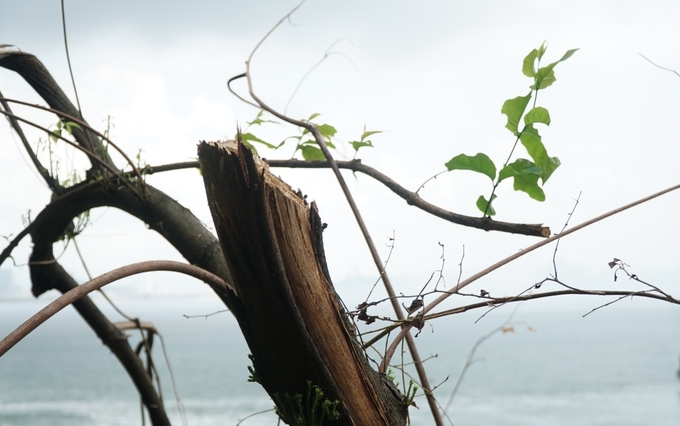
Many trees have sprouted green shoots and new leaves three weeks after the storm, but it will take 4-6 months to see a clear recovery.
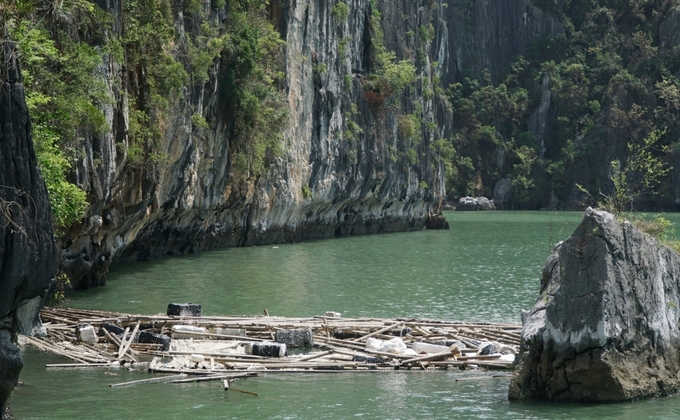
In addition to the destroyed vegetation, the circulation after the storm has generated a huge amount of waste in Ha Long Bay.
The waste is mainly broken aquaculture cages, foam buoys, rafts, bamboo, and equipment of many coastal works destroyed by the storm that have drifted back, affecting the landscape and environment.
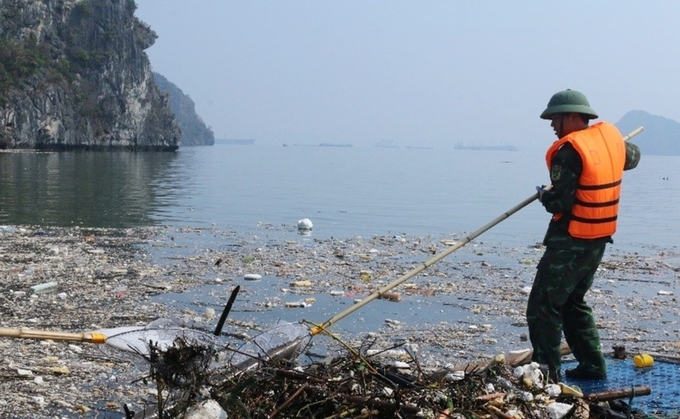
Ha Long City has mobilized about 150 people and 50 waterway vehicles daily to collect, transport garbage, and clean up the bay after the storm. The units will collect garbage in the core area of Ha Long Bay heritage, focusing on tourist attractions on the bay, then all trash on the sea surface, at the foot of the islands, and on the beaches.

The cages destroyed by Typhoon Yagi are still floating near Tuan Chau Island and have not been collected.
Vu Kien Cuong, Head of Ha Long Bay Management Board, said the garbage cleanup campaign would continue in October "until the bay is clean." Currently, the forces focus on collecting at the foot of the island, the sandbank, and the shore of Tuan Chau Island.
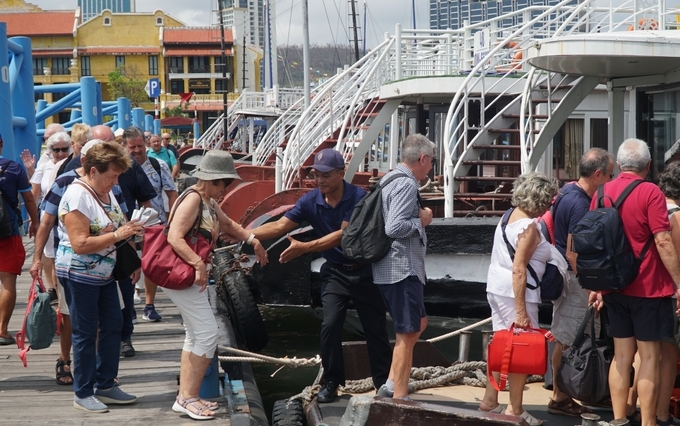
Although not fully recovered, Ha Long Bay has reopened to visitors since September 13. Ten days after the storm, the bay welcomed about 30,000 visitors, of which nearly 90% were foreign visitors.
The photo shows a group of Spanish tourists boarding a boat to visit the bay on the morning of September 30.
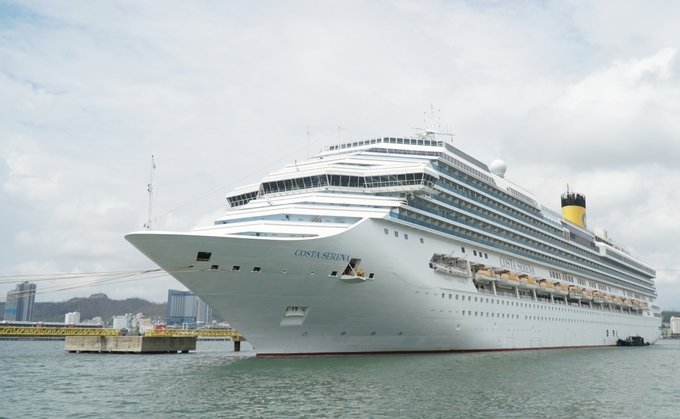
A cruise ship from Hong Kong docked at Ha Long International Passenger Port on September 30, becoming the first cruise ship to arrive in the bay after Typhoon Yagi, kicking off the 2024-2025 cruise season. Guests were divided into groups to visit the bay and other tourist attractions.
It is expected that from now until the end of the year, Ha Long Bay will welcome 16 large cruise ships from world-famous corporations and brands, bringing thousands of tourists from Europe, America, and China to Ha Long.
Translated by Huong Giang

(VAN) Ms. Nguyen Thi Dung, Deputy Director of Ngoc Hoang Cooperative, shared about the journey of bringing dragon fruit to Europe, achieving annual revenues in the billions of VND.
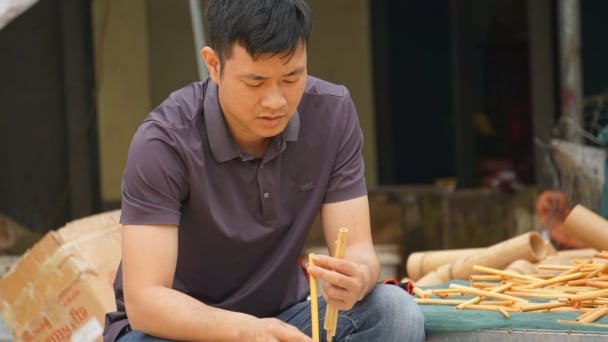
(VAN) Bamboo products from Thang Tho Bamboo Cooperative have reached many countries around the world, while also creating jobs for local workers.
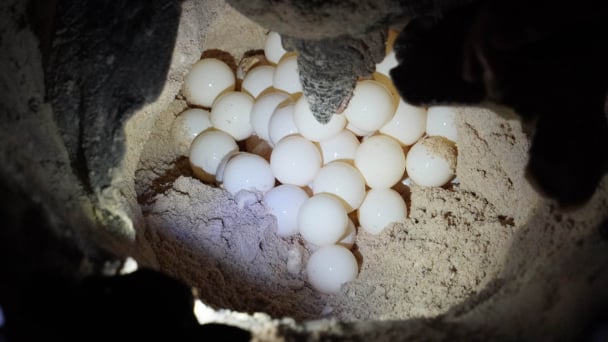
(VAN) The Management Board of Con Dao National Park reported that a green sea turtle, tagged in the Philippines, has traveled thousands of kilometers to lay 84 eggs on Bay Canh Islet.
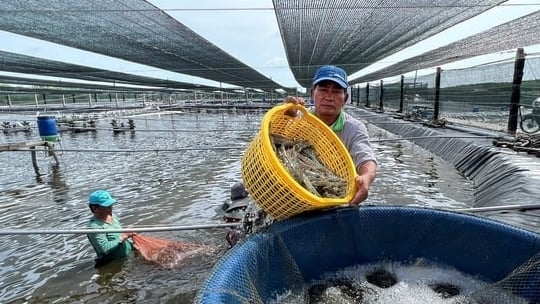
(VAN) Green technology is paving a new path for sustainable aquaculture in the Mekong Delta in particular and across the country in general, helping reduce emissions and adapt to climate change.
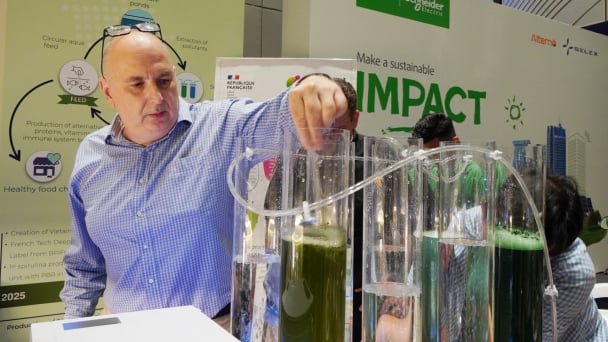
(VAN) On May 27, La French Tech Vietnam (the French startup and innovation community in Vietnam) held the French Tech Summit Vietnam 2025.
/2025/05/27/4731-2-223159_980.jpg)
(VAN) No votive paper, no styrofoam, no plastic bags, no plastic bottles, and no single-use plastic trays are the key rules tourists should keep in mind when visiting Con Dao.

(VAN) In the fight against plastic pollution, Vietnam has been demonstrating a proactive, pioneering, and active role in addressing the greatest environmental challenge today.